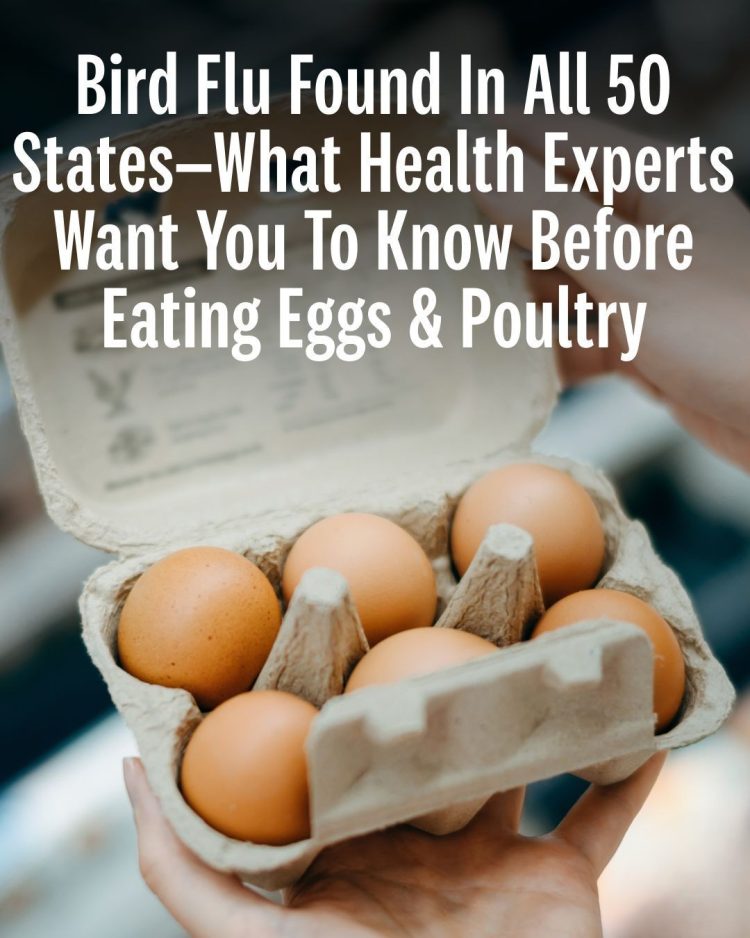ADVERTISEMENT
How Much Has H5N1 Already Impacted Our Food Supply?
man grabs carton of eggs at supermarketpinterest
Grace Cary//Getty Images
H5N1 has presented a hindrance when it comes to the commercial dairy and livestock industry, but not in a way that will necessarily get you sick. “We have already seen milk infected with H5N1, but pasteurization kills the virus. We have not found it in beef, chicken or eggs,” says Brian Labus, PhD, MPH, REHS, Assistant Professor at University of Nevada Las Vegas’s School of Public Health.
“The likelihood of H5N1 being transmitted in poultry products is extremely low as the onset of symptoms appear rapidly in poultry, especially turkeys, and the birds quickly succumb to the virus,” says Mitzi Baum, CEO of Stop Foodborne Illness. The onset of H5N1 is so fast that Labus says that infected birds do not have enough time to lay eggs before the symptoms become fatal.
In addition, several federal and industry guidelines are in place to further reduce the risk of H5N1 entering our food supply. “The likelihood that eggs from infected poultry are in the retail market is low, due to safeguards in place, which include testing of flocks and federal inspection programs,” says Dr. Mickey Rubin, Vice President of Research for The American Egg Board. “Once a commercial poultry farm is identified as HPAI positive, the farm is placed under quarantine, and all movement of eggs and birds immediately stops. This is required and enforced by state veterinarians working collaboratively with USDA.”
Rubin also notes that egg farmers dealing with an avian flu outbreak cannot resume normal operations without thorough cleaning, disinfecting, testing, and approval from the USDA and the state government. The loss in production helps prevent infected products from reaching the food supply. It also puts a strain on the supply chain, which may increase egg and poultry prices for the consumer.
Can We Still Eat Eggs & Poultry?
cracking eggs into panpinterest
Brett Holmes Photography//Getty Images
When it comes to avian flu risk levels, buying eggs and poultry from the supermarket is on the lower end of the spectrum. The CDC argues that there is no evidence that food will transmit H5N1—as long as it’s cooked and handled properly.
“Although H5N1 can potentially be found in our food, influenza isn’t really a foodborne disease. You have to breathe it in to get sick, not eat it,” Labus explains. “There is a much greater risk of being infected with common foodborne pathogens like Salmonella.”
Health experts advise fully cooking your eggs and poultry to an internal temperature of 165°F to kill bacteria and viruses, including this strain of avian influenza. Thoroughly cooking your chicken is something most home cooks are familiar with doing, but the increased precautions may affect how you consume eggs. Soft, runny, and undercooked eggs don’t reach a high enough temperature to stave away pathogens, which presents the risk of transmission. The safest way to eat eggs is to cook them all the way, meaning both the white and yolk are firm.
If you’re not ready to give up on runny eggs, Baum suggests buying pasteurized shell eggs that can reduce the risk of transmission. It’s also advised that you use these eggs, or pasteurized egg products, when making recipes that don’t cook eggs all the way through. Examples include salad dressings and homemade ice cream.
ADVERTISEMENT
